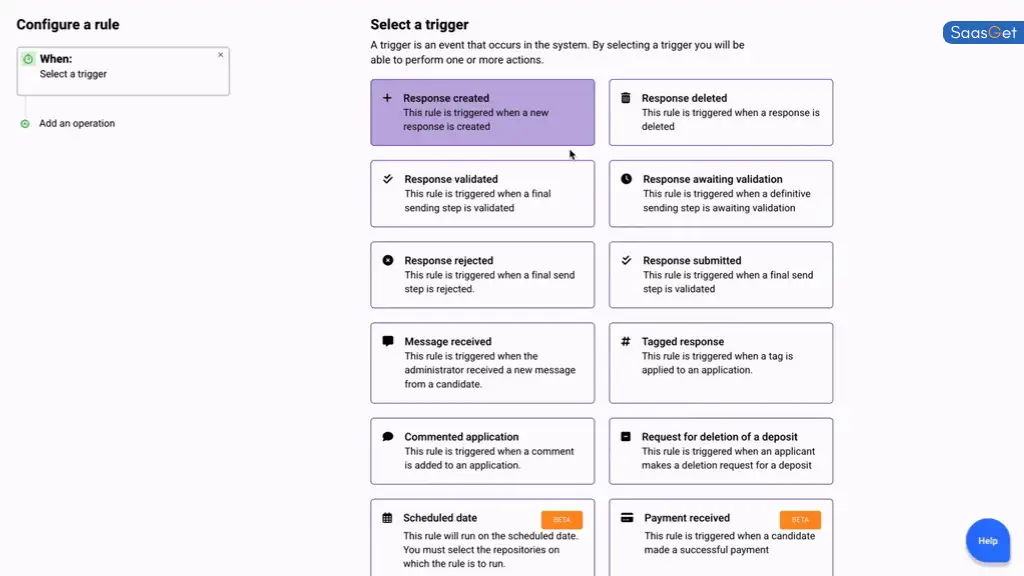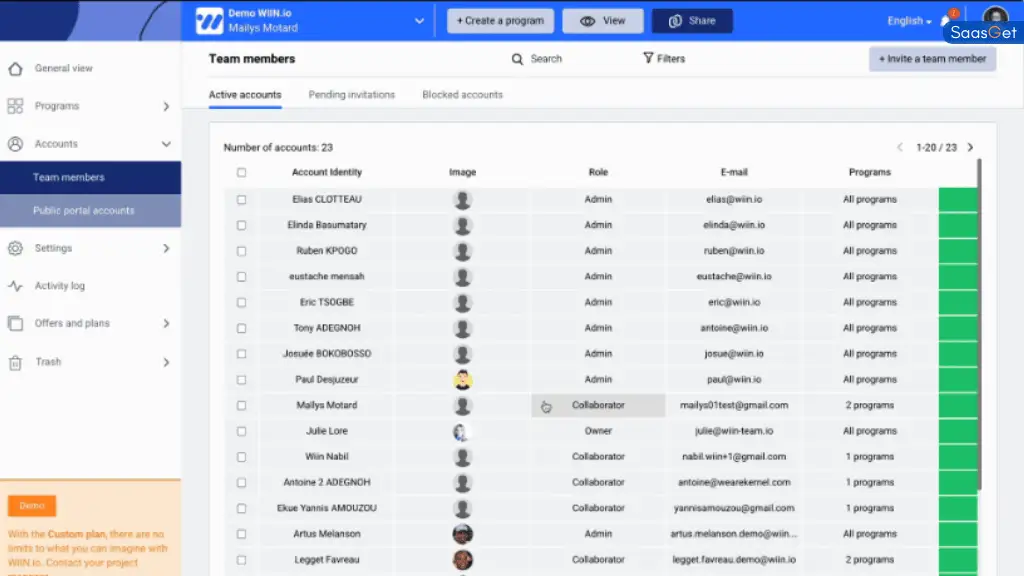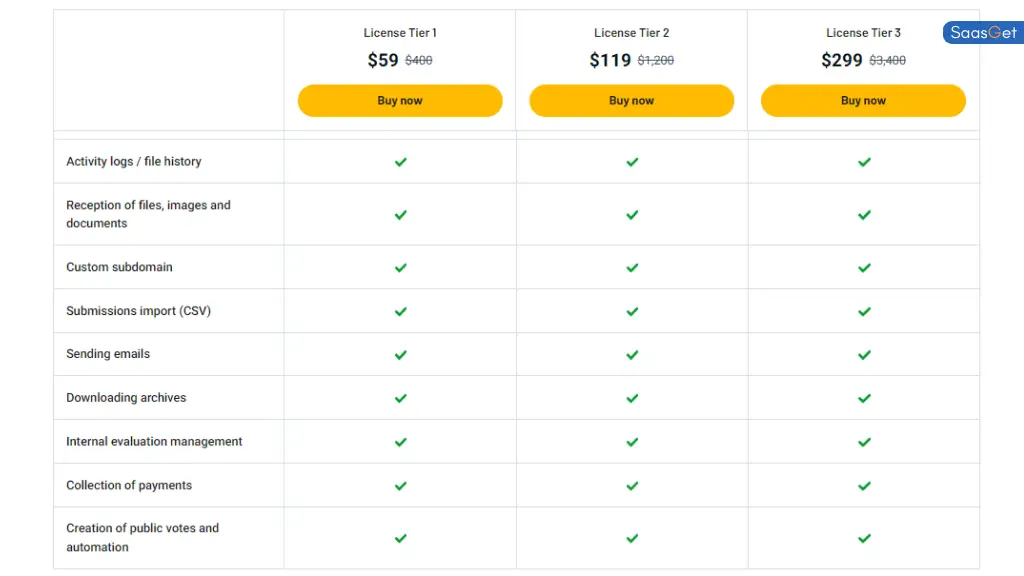Top Client Communication Platforms for Enhanced Collaboration & Engagement. Discover the best client communication platforms to boost collaboration & engagement. Enhance teamwork effortlessly & connect like never before!
Importance of Client Communication Platforms
Effective client communication platforms are essential for successful collaboration. These platforms ensure that teams communicate seamlessly. Good communication can lead to improved relationships, faster project completion, & better engagement. When teams & clients collaborate effectively, they can achieve common goals efficiently.
A key benefit of using client communication platforms is the reduction of misunderstandings. Clear, concise communication minimizes confusion. This helps teams stay focused on their tasks. Many platforms offer multiple features like messaging, video calls, & file sharing, enhancing overall productivity.
On top of that, these platforms foster a sense of community. Clients & teams feel more connected, even while remote. A positive relationship between clients & teams leads to higher satisfaction rates. Engaging with clients becomes more straightforward. They feel heard & valued, prompting ongoing collaboration.
In summary, the right client communication tools can make a significant difference in project outcomes. Choosing a platform that meets your needs is vital. Each tool has unique features that cater to different scenarios. The ultimate goal is to make collaboration enjoyable & productive.
Features to Look for in Client Communication Tools
Various features distinguish one client communication platform from another. Understanding which features best suit your needs is crucial for optimizing collaboration. Below are some features that can enhance client engagement.
- Messaging: Instant messaging keeps communication flowing.
- Video Conferencing: Face-to-face interactions enhance understanding.
- File Sharing: Quick access to important documents is vital.
- Task Management: This feature helps keep everyone on track.
- Integrations: Connect other tools for a smoother workflow.
Now, let’s explore each feature further.
Messaging allows for real-time conversations. This feature reduces response times & promotes immediate feedback.
Video Conferencing is essential for discussions needing visual cues. Video meetings foster better connections among team members & clients.
File Sharing facilitates quick access to essential documents. It ensures all stakeholders have the necessary resources at hand. This feature is crucial when working on projects that need timely updates.
Task Management tools help teams assign, track, & monitor tasks. Keeping everyone informed increases accountability & productivity.
Lastly, Integrations with other tools streamline your processes. These can include calendars, email services, & project management systems, enhancing overall workflow.
Selecting a client communication platform with these features can significantly impact your project’s success rate.
Top Client Communication Platforms
Choosing the right client communication platform can transform how teams collaborate. Below is a list of some of the best platforms available today. This table provides a quick overview of their features.
| Platform | Key Features |
|---|---|
| Slack | Instant messaging, file sharing, integrations |
| Microsoft Teams | Video calls, task management, collaboration tools |
| Zoom | Video conferencing, webinars, screen sharing |
| Trello | Task management, board view, integrations |
| Asana | Project tracking, communication, file attachments |
Among these platforms, Slack stands out for its strong messaging capabilities. It serves as a hub for team communication, offering integrations with many other tools.
Microsoft Teams excels in video conferencing & collaboration. Its integration with Office 365 makes it a favorite for many organizations.
Zoom is renowned for its robust video conferencing features, effective for large meetings or webinars.
Trello & Asana focus on task management. They provide functionality to track project progress while maintaining open lines of communication.
Selecting the right platform depends on your specific needs & preferences.
Enhancing Engagement with Client Communication Tools

Improving client engagement is a crucial part of relationship management. Client communication tools play a pivotal role in achieving this goal. Firstly, these tools should promote open dialogue. When clients see responsiveness, their trust increases. They are more likely to share feedback, fostering a two-way conversation.
Regular updates through these platforms keep clients in the loop. Updates can include project milestones or challenges faced. This level of transparency boosts client confidence in your abilities. Clients appreciate when teams proactively communicate.
And don’t forget, utilizing video features can enhance engagement. Face-to-face meetings promote stronger connections. People are more likely to express their thoughts when they feel a personal connection.
Feedback requests also encourage client involvement. Platforms can send surveys or polls directly, making it easier for clients to share their opinions.
Integrating Client Communication Platforms with Other Tools
Integration with other tools can significantly improve workflow. Many client communication platforms offer features that connect to popular applications. These integrations can streamline various tasks, from file sharing to project management.
For instance, connecting Slack with Google Drive simplifies document handling. Team members can share & access files without switching between apps. This enhances productivity, allowing focus on crucial tasks.
On top of that, sync clients’ calendars with your platform. Scheduling meetings becomes hassle-free. This integration minimizes scheduling conflicts & respects clients’ time.
Utilizing project management tools alongside communication platforms improves task tracking. For example, linking Asana with Zoom enables discussion about specific tasks during video calls. This linkage ensures clarity & direction.
Exploring integrations can reveal connections that cater to your specific needs. Many platforms continually update their API options, enhancing versatility.
Case Studies of Successful Implementation
Examining case studies reveals how effective client communication platforms can be. One company, XYZ Corp, adopted Slack, leading to higher productivity. They reported a 40% reduction in email traffic. Team members began to communicate in real-time using channels for specific projects.
Another example comes from ABC Inc., which implemented Zoom. Their client satisfaction scores improved by 30%. Regular video calls kept clients informed about project progress. Clients appreciated the personal touch during discussions.
These cases demonstrate the benefits of choosing the right platforms. They both enhanced collaboration & strengthened relationships with clients.
Each case indicates that the correct implementation matters. Training teams on utilizing tools fully can lead to uncovering hidden benefits. Regular evaluations help maintain effectiveness over time.
Choosing the Right Client Communication Platform for Your Business
Selecting the best client communication platform requires careful consideration. Here are some tips to help you make the right choice.
- Assess Your Needs: Identify what features you require.
- Consider Your Team: Involve team members in discussions.
- Test Platforms: Many tools offer free trials or demos.
- Check Customer Support: Ensure they provide reliable support.
- Read Reviews: Learn from others’ experiences with the platform.
First, assess your specific needs. Determine which features are essential for your team’s workflow. Consider task management, communication, & collaboration needs.
Next, involve your team in discussions. Their insights can guide choosing a platform that suits their preferences. A platform that resonates with your team will boost overall adoption rates.
Testing platforms through trials or demos can give you hands-on experience. This trial allows you to explore features & interface. Real-world use can highlight potential challenges.
And another thing, check for reliable customer support. A responsive support team can help address problems quickly, reducing downtime.
Finally, reading reviews offers valuable insights. Look for feedback on ease of use, features, & support. Choosing a platform with a positive reputation can significantly benefit your team.
Feedback & Continuous Improvement

Feedback plays a critical role in optimizing communication platforms. Regularly collect input from team members & clients. Their experiences can help identify areas for improvement. Create a consistent feedback loop, where suggestions lead to actionable changes.
Encouraging team members to provide input encourages ownership of the platform. When they feel their opinions matter, they are more likely to actively engage.
Surveys & polls can gather structured feedback. Clients can express their thoughts on communication & support. Analyzing this data highlights strengths & weaknesses in how you communicate.
After implementing changes based on feedback, share your improvements with all stakeholders. Doing so reinforces a culture of continuous enhancement. It shows that client voices are valued & considered.
Over time, reviews & adjustments can lead to optimal use of the platforms. Adjusting communication styles based on client preferences fosters deeper connections. This results in improved collaboration & ongoing client engagement.
“Using the right tools makes communication effortless.” – John Smith
Security & Privacy Considerations
When implementing client communication platforms, security is paramount. Protecting sensitive information builds trust with clients. Many platforms adhere to strict security protocols. Understanding these features ensures a safe environment for communication.
Before selecting a platform, evaluate its data protection measures. Look for end-to-end encryption, secure sign-ins, & compliance with regulations. Knowing your platform adheres to the latest security standards reduces risks.
Another essential aspect involves user permissions. The ability to control access to specific information is crucial. Administrators should set permissions to restrict sensitive data access.
Regularly educating team members on security practices can further reduce risks. Training should cover issues like phishing attempts or insecure password usage. Ensuring everyone is aware of security protocols promotes vigilance.
By prioritizing security, companies can safeguard client data. This builds trust & confidence in your communication practices.
Measuring the Effectiveness of Client Communication Platforms
Measuring the effectiveness of client communication platforms involves key metrics. These metrics can gauge how well the tools serve your needs. Start by analyzing engagement rates, response times, & project completion speeds.
Tracking engagement rates gives insight into platform usage. High levels of interaction indicate a strong connection with clients & team members. On the other hand, low engagement may signal that the platform isn’t effective.
Response times serve as another key metric. Faster response times indicate efficient communication. Regular monitoring allows you to identify areas needing improvement.
And another thing, evaluate project completion speeds to determine productivity levels. Analyze how quickly tasks are completed when using the platform. This can help you identify process bottlenecks or inefficiencies.
Surveys or feedback requests can also provide qualitative data. This feedback helps gauge overall satisfaction with the communication tools. Combining qualitative & quantitative measurements offers a comprehensive view of effectiveness.
In my experience, using tools like Slack & Zoom improved our client interactions. We built better relationships by responding faster to inquiries. Engaging clients regularly turned into more productive collaborations.
Feature of WIIN.io
WIIN.io is a versatile platform focused on client communication & engagement. It offers accumulated features aimed at enhancing collaboration among users. Some primary characteristics include:
- Lifetime access to WIIN.io, ensuring long-term utility.
- All future Basic Plan updates to keep users current.
- Mapping of any changes in plan names to their new counterparts, maintaining a seamless user experience.
- No codes are needed for activation users simply select their preferred plan.
- Licenses must be activated within 60 days from purchase for proper use.
- Users can upgrade or downgrade among three license tiers during the promotional period.
- Complete compliance with GDPR regulations to protect user data.
- Available only for new users without existing accounts, ensuring fresh engagement.
- Unlimited submissions, programs, questions, & steps, enabling limitless possibilities.
- Integrations via Zapier for extending functionality with other apps.
- Ability to create customized management views for personalized experiences.
- Color customization of the interface adds a personal touch for users.
- Tracks a history of all emails sent from the platform.
- Maintains activity logs & file history to monitor interactions.
- Facilitates the reception of files, images, & documents efficiently.
- Offers a custom subdomain for enhanced branding.
- Supports submissions import using CSV files for ease of data management.
- Enables sending emails directly through the platform.
- Allows downloading of archives for record-keeping.
- Manages internal evaluations seamlessly.
- Provides a mechanism for payment collection & financial transactions.
- Supports the creation of public votes with automation features for engagement.
Challenges of WIIN.io
Users might encounter several challenges while utilizing WIIN.io. First, some features may have limitations compared to competing platforms. For example, certain integrations might not support all user needs, leading to compatibility issues. Secondly, users may face a steep learning curve associated with navigating the platform’s functionalities. This learning phase can be particularly daunting for users without prior experience with similar tools.
User feedback highlights issues such as limited customer support availability during critical hours. This gap can lead to frustration, especially when users need immediate assistance. On top of that, while WIIN.io offers numerous features, not all users maximize them due to a lack of guidance or tutorials. Consequently, some tools remain underutilized.
To overcome these challenges, users should actively engage with available resources, such as video tutorials & community forums. And don’t forget, utilizing integration tools that WIIN.io supports can significantly enhance the platform’s effectiveness & broaden its applicability. Regular interaction with customer service can also aid in resolving issues timely.
Price of WIIN.io

The pricing structure for WIIN.io is straightforward & offers flexibility for different user needs. Below is a detailed overview of the available license tiers:
| License Tier | Price |
|---|---|
| License Tier 1 | $59 |
| License Tier 2 | $119 |
| License Tier 3 | $299 |
This pricing layout allows users to select a plan that aligns with their specific requirements. Each tier unlocks different levels of functionality & support which can cater to various organizational needs, from small teams to larger enterprises.
Limitations of WIIN.io
While WIIN.io boasts a range of useful features, it also possesses certain limitations that may deter potential users. Notably, some essential features often found in competing platforms are absent. For instance, enhanced analytics & reporting capabilities might not match user expectations. Such gaps can limit insights needed for strategic decision-making.
User experience can suffer from interface design issues as well. In some instances, users report a lack of intuitive navigation, making it difficult to find specific functionalities. This can lead to delays in communication & hinder efficient collaboration. And another thing, there may be occasional bugs or glitches that disrupt seamless operations.
Improvement in customer support response time & more in-depth onboarding processes could significantly enhance user experiences. These changes might help new users acclimate more quickly & utilize the platform to its maximum potential. Continuous software updates can address bugs & feature deficiencies effectively.
Case Studies
Several case studies showcase how organizations have successfully implemented WIIN.io to improve communication & engagement. One such example is a small marketing agency that adopted WIIN.io to manage client interactions more effectively. They leveraged the platform’s unlimited submissions feature to gather feedback from clients after each project phase. As a result, they were able to refine their strategies based on direct client input.
Another case involves a non-profit organization that utilized WIIN.io for managing volunteer registrations & donations. They created customized management views to tailor their communication efforts. This allowed them to engage with their audience based on their specific interests, leading to a 40% increase in volunteer sign-ups over six months.
A corporate training department also adopted WIIN.io for internal evaluations & feedback collection from employees. This helped streamline the feedback loop, enabling easier identification of areas for improvement. High levels of employee engagement directly contributed to a more cohesive & productive work environment.
Recommendations for WIIN.io
To maximize the benefits of WIIN.io, users should consider several actionable strategies. Firstly, leveraging the platform’s integrations through Zapier can connect WIIN.io with tools already in use. This seamless transition enhances workflow efficiency, allowing for automated tasks & notifications.
Secondly, setting aside time for team training is essential. By organizing workshops or training sessions, users can familiarize their teams with all features available, reducing the learning curve significantly. Third, creating a documentation repository with guidelines on how to utilize different aspects of WIIN.io effectively can enhance ongoing training.
Lastly, maintaining consistent communication with customer support for ongoing guidance & troubleshooting can ensure users stay on track. Regularly checking for product updates can also help users take advantage of newly added features that enhance functionality.
Exploring Other Client Communication Platforms
Besides WIIN.io, various other platforms exist that enhance client communication & collaboration. Each has unique offerings, tools, & features. Some notable alternatives include:
- Slack
- Microsoft Teams
- Zoom
- Trello
- Asana
Comparing Features Among Platforms
When evaluating platforms, comparing features is crucial. Below is a summary of important features offered by various client communication tools:
| Platform | Key Features |
|---|---|
| WIIN.io | Unlimited submissions, GDPR compliant |
| Slack | Real-time messaging, file sharing |
| Microsoft Teams | Integrated with Office 365 |
| Zoom | Video conferencing, webinar hosting |
| Trello | Project management, visual boards |
User Experiences & Feedback
User experiences can vary based on specific organizational needs. Reviews often highlight strengths in community engagement & ease of use. Be that as it may, some users mention challenges related to advanced feature implementation. Continuous feedback is important for improvements & feature enhancements, ensuring the tools evolve with user expectations.
What are the key features of top client communication platforms?
Top client communication platforms typically include features such as real-time messaging, video conferencing, file sharing, & integration with other tools. These functionalities facilitate smooth communication & collaboration among teams & clients.
How do client communication platforms enhance team collaboration?
Client communication platforms enhance team collaboration by providing a central hub where team members can communicate synchronously or asynchronously. This reduces delays & ensures everyone is informed & engaged, regardless of their location.
Which platforms are recommended for effective client engagement?
Recommended platforms for effective client engagement include tools like Slack, Microsoft Teams, Zoom, & Trello. Each of these platforms offers unique features that can cater to the specific needs of different organizations & teams.
Can client communication platforms be integrated with other software?
Yes, most client communication platforms offer integration capabilities with various software applications, such as CRM systems, project management tools, & third-party applications. This integration streamlines workflows & enhances productivity.
What factors should be considered when choosing a client communication platform?
When choosing a client communication platform, consider factors such as user-friendliness, scalability, security features, & customer support. These elements are crucial for ensuring that the platform meets the specific needs of your team & clients.
Conclusion
In today’s world, choosing the right client communication platforms is key to improving teamwork & boosting engagement. These tools provide a simple way to chat, share, & collaborate, making it easier for teams to connect & innovate. By using the best platforms, you can enhance collaboration & ensure everyone is on the same page. Remember, the goal is to create an environment where ideas flow freely & communication is smooth. So, explore your options & find the perfect communication tools that fit your team’s needs, paving the way for success & stronger relationships!


